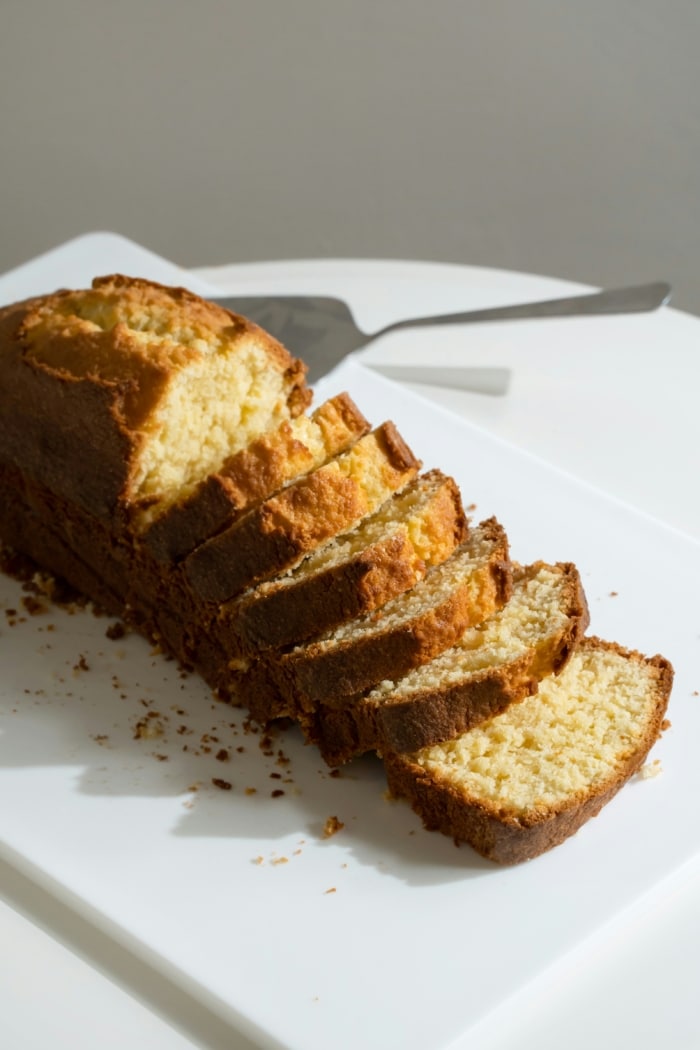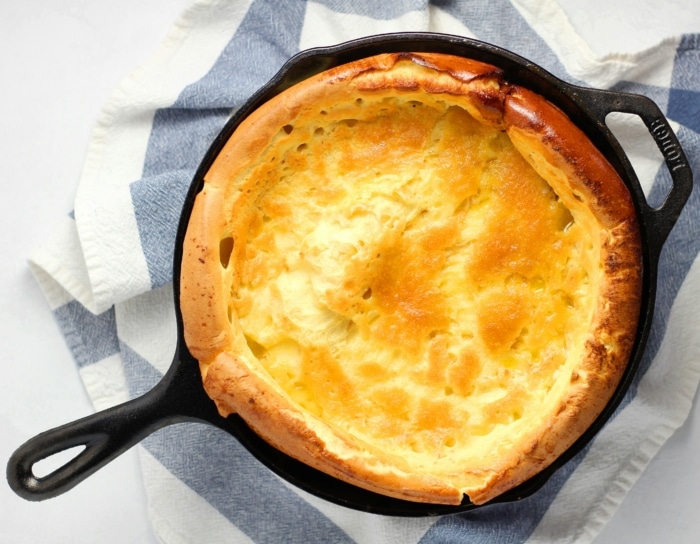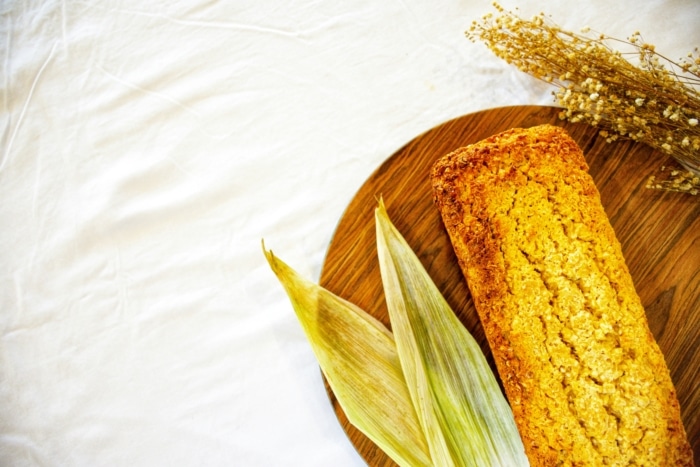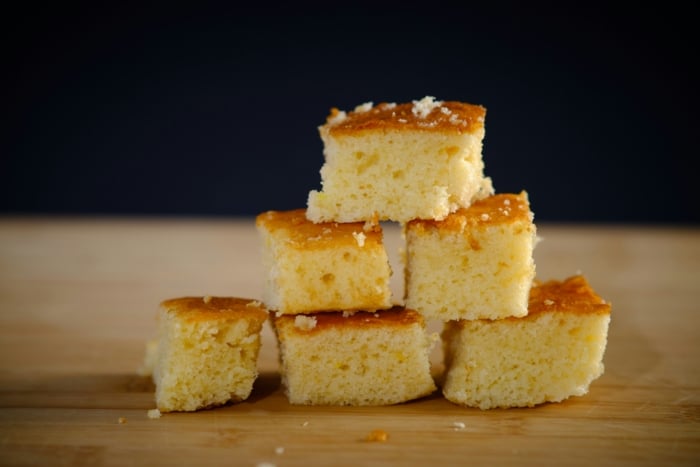Is Cornbread Gluten Free?
Cornmeal, the main ingredient in cornbread, is naturally gluten free. However, most cornbread recipes also include wheat flour, which contains gluten. So, if you have Celiac disease or a gluten intolerance, you should avoid regular cornbread. This post answers: is cornbread gluten free?
There are gluten free cornbread mixes and recipes available. These recipes typically use a gluten free flour blend instead of wheat flour. You can also make gluten free cornbread by substituting gluten free flour for wheat flour in your favorite recipe.
Try my homemade gluten free cornbread recipe!

Check out Is Quinoa Gluten Free?
What is Cornbread Made Of?
Cornbread is a quick bread made with cornmeal, flour, eggs, milk, sugar, and a leavening agent, such as baking powder or baking soda. This versatile dish can be served as a side dish, snack, or dessert. There are many different variations of cornbread, but the basic ingredients are always the same.
Cornmeal: Cornmeal is the key ingredient in cornbread. It is made from finely ground corn, which gives the bread its characteristic texture and flavor. There are two main types of cornmeal: fine and coarse. Fine cornmeal is best for making cornbread, while coarse cornmeal is used for other dishes, like polenta.
Flour: Flour gives it structure and helps it rise. Cornbread is usually made with all-purpose flour.
Eggs: Eggs add moisture and richness to cornbread. They also help to bind the ingredients together and to give the bread its texture.
Milk: Milk thins the batter and adds flavor. You can use whole milk, buttermilk, or even water.
Sugar: Sugar adds sweetness to cornbread. You can use granulated sugar, brown sugar, or even honey.
Leavening agent: A leavening agent helps it rise. Baking powder and baking soda are the most common leavening agents used in cornbread.
Other ingredients: Other ingredients that can be added to cornbread include butter, oil, shortening, bacon drippings, cheese, peppers, onions, and herbs.

Can Gluten Intolerant People Eat Cornbread?
Cornbread, a beloved dish characterized by its crumbly texture and subtle sweetness, has long been a staple in many cuisines. However, for individuals with gluten intolerance or celiac disease, traditional cornbread, often prepared with wheat flour, can trigger digestive issues and other adverse health effects.
Fortunately, the culinary world has welcomed the need for gluten free alternatives, and gluten free cornbread is a great option for those with gluten sensitivities. This modified version is a great replacement.
Navigating the Gluten Free Cornbread Landscape
WIt is crucial to exercise caution and adopt mindful practices to ensure a safe and enjoyable experience. Here are some key guidelines to consider:
1. Seek the “Gluten Free” Hallmark: When purchasing store-bought cornbread mixes or pre-made products, search for the “gluten free” label. This certification provides assurance that the product has been tested and verified to meet gluten free standards.
2. Scrutinize the Ingredients List: With attention, examine the ingredients list to identify any potential gluten containing ingredients. Wheat flour, a common culprit in traditional cornbread, should be absent in gluten free alternatives.
3. Embrace Gluten Free Flour Blends: For those venturing into homemade gluten free cornbread creations, opt for gluten free flour blends specifically designed to replicate the texture and flavor of traditional wheat flour. Rice flour, sorghum flour, and millet flour are popular choices for gluten free baking.
4. Seek Expert Guidance: If uncertainties arise regarding the suitability of a cornbread product or the intricacies of gluten free baking, consult with a healthcare professional or a registered dietitian. Their expertise can provide tailored advice and ensure adherence to a gluten free lifestyle.
How to Make Gluten Free Cornbread
If you’re looking to create gluten free cornbread, here are some tips:
Replace the regular flour with cornmeal. This will help your cornbread stay fluffy and gluten free.
Use baking powder instead of baking soda. Baking soda is made from sodium bicarbonate, which can react with gluten in certain foods. If you don’t have any baking powder on hand, use 1/4 teaspoon of baking soda and 1/4 teaspoon of cream of tartar per cup of flour instead!
Use butter instead of shortening or vegetable oil (if possible). Butter is naturally gluten free, so it’s a great choice for this recipe!

How to Store
The best way to store cornbread depends on how long you want it to last.
For short-term storage (1 to 2 days):
Let the cornbread cool completely.
Wrap the cornbread tightly in aluminum foil or plastic wrap.
Store the cornbread in a cool, dry place, such as a pantry or breadbox.
For longer-term storage (up to 1 week):
Let the cornbread cool completely.
Wrap the cornbread tightly in aluminum foil or plastic wrap.
Place the wrapped cornbread in an airtight container.
Store the container in the refrigerator.
For even longer-term storage (up to 3 months):
Let the cornbread cool completely.
Cut the cornbread into slices.
Wrap each slice tightly in aluminum foil or plastic wrap.
Place the wrapped slices in an airtight container.
Freeze the container.
Tips:
Do not store cornbread hot. This will create condensation, which can make the cornbread soggy.
Do not store cornbread in the refrigerator unless you plan to eat it within a week. Cold temperatures can make the cornbread dry out.
Do not store cornbread in the freezer for more than three months. The texture and flavor of the cornbread will start to deteriorate after that time.
How to refresh cornbread:
If your cornbread has become dry, you can refresh it by heating it in the oven at 350 degrees Fahrenheit for 10-15 minutes. You can also microwave the cornbread for 30-60 seconds.

Frequently Asked Questions (FAQs)
Yes, traditional cornbread has wheat flour, so it’s not gluten free. But there are plenty of recipes that use gluten free cornmeal and flour, so you can enjoy cornbread without the gluten worries.
Gluten intolerant individuals should generally avoid regular cornbread, which contains gluten from wheat flour. However, gluten free cornbread alternatives are widely available.
While corn itself is gluten free, traditional cornbread recipes often include wheat flour, rendering it unsuitable for those with gluten sensitivities. Fortunately, gluten free cornbread mixes and recipes are readily available.
Many cornbread mixes are gluten free, such as Bob’s Red Mill, King Arthur, and Glutino. Check the label to ensure it’s certified gluten free.
You May Also Like
- Are Reese’s Gluten Free?
- Gluten Free Tortillas
- Gluten Free Cupcakes
- Are Sprinkles Gluten Free?
- Gluten Free Bread Recipe
- Is Peanut Butter Gluten Free?
If you found this post about if cornbread is gluten free is helpful, I would really appreciate a review! You can find me on Instagram, Facebook, and Pinterest. In addition, join my exclusive Facebook Group for a behind the scenes look.

